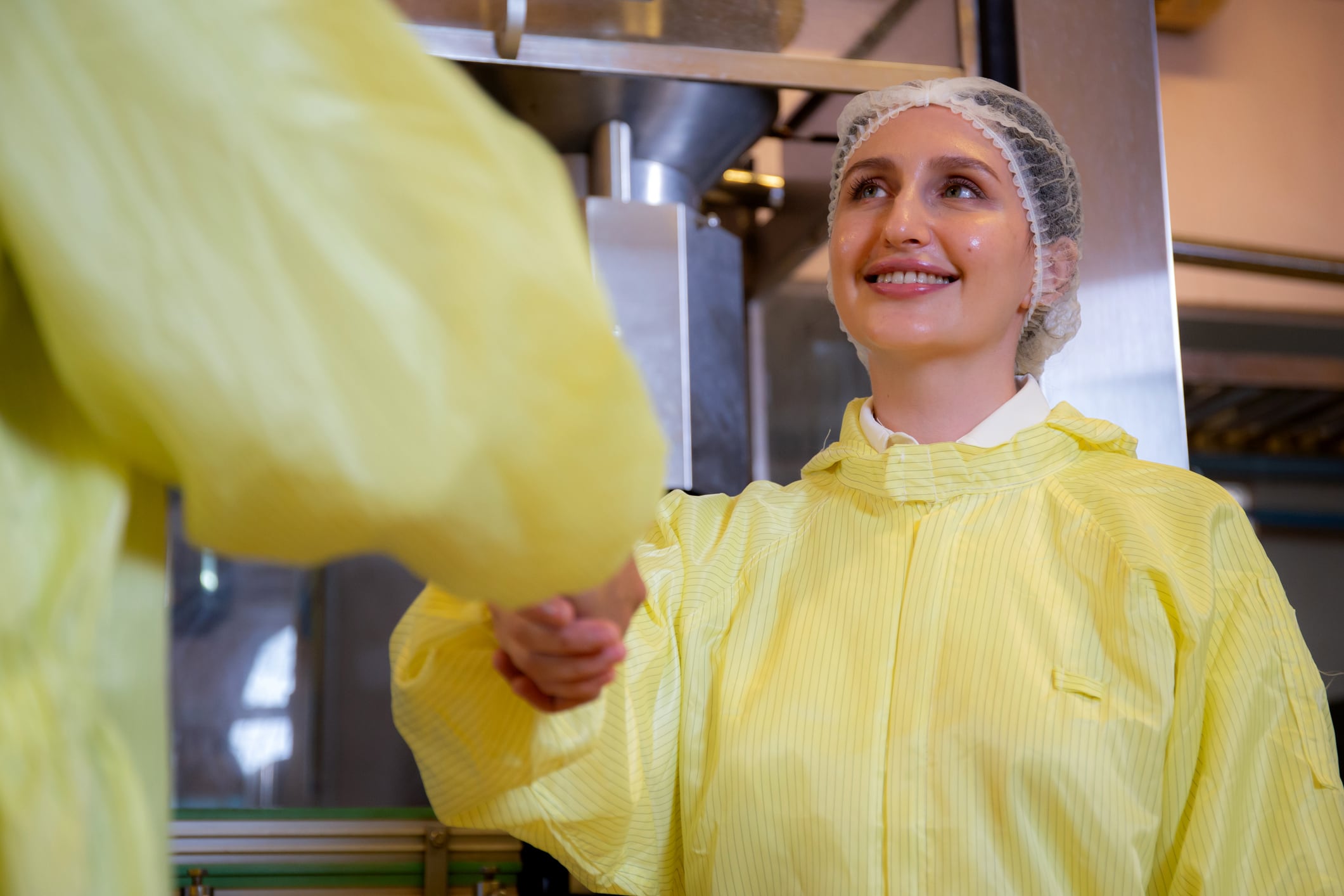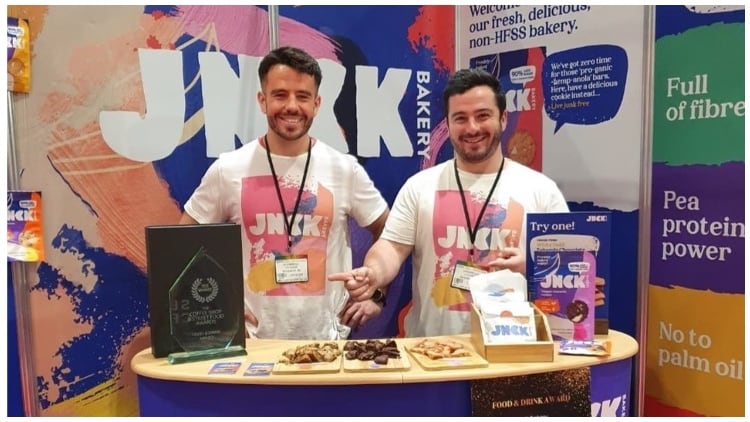There are countless lessons I could share from starting a food and drink business — but for now I’ll spare you the full list.
I attended LUNCH! recently and discussed with many founders their aspirations to launch with major grocers. I had been there myself. For me, even a hint of interest from a major grocer on our stand would lead to feelings of intense euphoria - I’ve made it!
We did go on to win a place on Tesco’s Accelerator programme, which was incredibly exciting. I was, however, often told ‘the hard work starts when you’ve got the listing’. Given how relentlessly we worked up until this point, this honestly surprised and scared me.
But it turned out to be absolutely true - things go up a gear again - and whilst sadly at JNCK we couldn’t make it work, I learnt a lot along the way.
So I’ve decided to zoom into this pivotal time of a challenger brand. That magical moment is coming for you - a launch into a major grocer for the first time. What should you consider?
1. Your category in-store: Opportunity and expectations
As the brand owner and ‘expert’, the grocer will expect you to have a clear view of where your product is best positioned in store. It’s highly unlikely you’ll be dual-listed — the same product appearing in two different parts of the store
For some brands, the appropriate location will be obvious. A functional yoghurt, for instance, would naturally sit within chilled functional dairy — somewhere alongside live yoghurts, cultured dairy, and protein yoghurts.
It can, however, be less clear-cut. Take a protein-enhanced cereal, (this isn’t the perfect example but stick with me) you could sit within the cereal aisle, alongside household names like Kellogg’s, or within sports nutrition, among other protein-focused brands.
At first glance, the cereal category might look more appealing — greater footfall and broader awareness. But with that comes a higher performance expectation. You’ll need to deliver a stronger rate of sale to retain the listing, which inevitably adds more pressure.
In addition, while overall footfall may be higher in the cereal aisle, the proportion of shoppers genuinely interested in your brand could be much lower — making it difficult to compete. Shoppers in this category might be particularly:
- Value-driven – focused on price and/or what’s on promotion.
- Loyalty-driven – sticking to a favourite brand, either within cereal or another protein product elsewhere in store.
- Mission-driven – time-poor and not inclined to browse or discover new brands. Or not as health driven.
So, picking the right category initially for the sustainability of your brand is really important. You need to feel good about the right kind of consumer (early adopters) seeing your product, or feel confident about driving them there - more on that later. You can also transition to a different place in-store over time - Grenade are a great example of this.
When Grenade first launched its now-iconic Carb Killa bar into the grocery channel, it was very much a hardcore sports nutrition brand — popular for its ‘50 calibre’ pre-workout product and ‘Thermo-Detonator’ fat burner. The Carb Killa initially launched in the sports nutrition aisle: a smaller category with lower footfall, but also lower sales expectations.
Over time, the success of the bar allowed Grenade to transcend this niche, moving from sports nutrition into mainstream confectionery. Today, it’s viewed less as a performance brand and more as a lifestyle-led one. In addition, it value-engineered their bar into a smaller format — making it commercially viable for the coveted meal-deal space. Nice story
I have real admiration for brands that are forced to prove themselves in tough categories and still find a way to win. Biotiful is, in my view, one of the best examples. In 2017, it brought its product to market at a time when consumer awareness and understanding of kefir were virtually non-existent.
Through clear education and consistent execution, Biotiful built the category from the ground up. While a flurry of copycat Kefir launches soon followed from major dairy brands, Biotiful maintained its position as market leader.
2. Your budget: Essential investments and essential, non-essentials
Despite plenty of exciting opportunities ahead of JNCK Bakery, fundraising remained a constant challenge. This was echoed by every founder I spoke to, regardless of the stage in their journey - it’s a really tough fundraising market. And launching into a major grocer is expensive.
There are the essential investments in the background, associated with scaling your product, supply chain and manufacturing operations. You may need to recruit people. These largely occur before launch and are often part of a clear framework.
But then there are the investments upon launch - not essential, but equally as important. Consider the investments required to support your sales and understanding of the consumer; there are so many options. Where you best spend your money suddenly feels much less clear. You won’t be able to do it all.
For example, you’re trying to understand your consumer. You might invest heavily in data packages - detailed quantitative metrics like sales, repeat rate, and incrementality — however, these figures alone won’t tell the full story. Or do you invest in shopper researchers - people who get on the ground and into stores to interview people, getting qualitative results on sentiment?
To support sales, how do you sensibly and proportionately invest across the classic marketing funnel of awareness, consideration and trial? When, for example, thinking about consideration and trial, which investments across price promotion, secondary space or sampling will likely yield the biggest return?
If this sounds complicated, it’s because it absolutely can be! It can lead to a lot of decision fatigue, discussions going around in circles and frustration. But you’ve got a limited budget and limited time to prove yourself, so what should you do?
My advice is before launch, you should firstly arm yourself with knowledge - what are the investments and timeframes associated with different options? This in itself can be surprisingly challenging to find and is likely to be unique to your category. You should network, and understand what has worked for other brands. There is also often the opportunity to share costs with like minded brands
The ultimate truth though, is that your brand is unique. And so where you invest your time and funds should also be unique. Sure, build a picture, but also listen to your gut. And if you invest in something that doesn’t pay off, you’ll absolutely learn as much from that as the ones that do.
I loved Pip Murrays recent post on the success of Pip and Nuts Stuffed Oat Bar. Pip ignored the pessimists who said the bar category was too crowded. She trusted her intuition and it paid off.
3. Enjoy it
When you finally launch into a supermarket, take a moment to actually enjoy it. It’s easy to get swept up in spreadsheets, rate-of-sale anxiety and the next challenge, but you’ve just done something extraordinary. You’ve built something from scratch and put it on the shelf of a national grocer — that’s a milestone worth celebrating.




